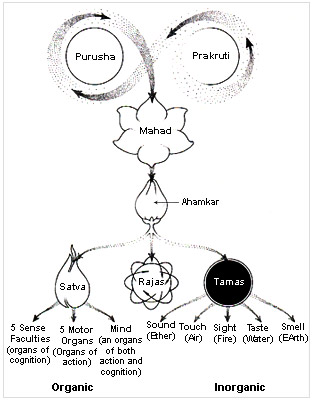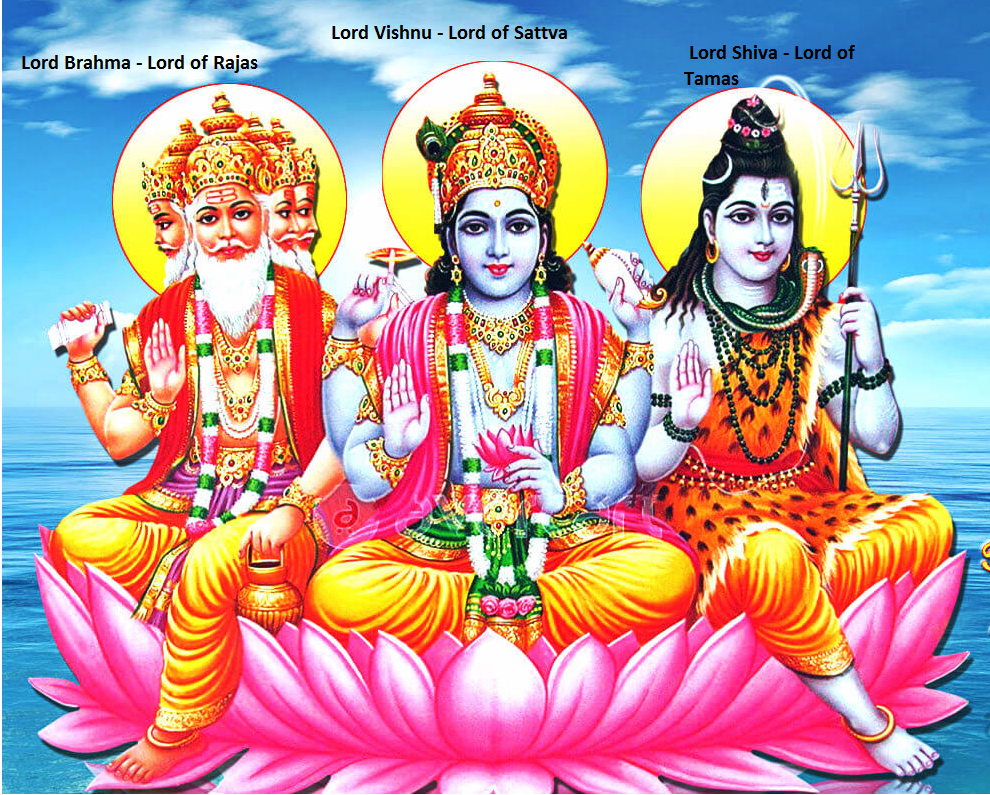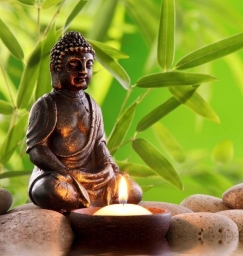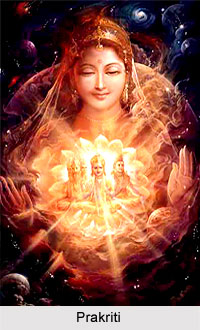Generally, the Samkhya philosophy

classifies all objects as falling under one of the two categories: Purusha and Prakriti.
Metaphysically, Samkhya maintains a revolutionary duality between spirit/consciousness (Purusha) and matter (Prakrti).
Purusha is the Transcendental Self or Pure Consciousness. It remains pure, "non-attributive consciousness ". Purusha is neither produced nor does it produce.
Prakriti is matter. Matter is inert, transient, and unconscious. It is made up of three qualities -Gunas

equivalent to creation, sustenance, and destruction. They comprise:
sattva (goodness) - pure, elevating, enlightening
rajas (passion) - incites one to create, acquire and enjoy
tamas (ignorance) - dirty, demeaning, deceiving, and destructive.
Ishvara (Creationist God)
The original school of Samkhya was founded by sage Kapila

The Samkhyan's argue that the existence of Ishvara cannot be testified and hence cannot be admitted to exist.
Later on followers of Samkhya adopted theism and included Ishvara within the system.
To know more visit here : Metaphysics in Samkhya Philosophy

classifies all objects as falling under one of the two categories: Purusha and Prakriti.
Metaphysically, Samkhya maintains a revolutionary duality between spirit/consciousness (Purusha) and matter (Prakrti).

equivalent to creation, sustenance, and destruction. They comprise:
sattva (goodness) - pure, elevating, enlightening
rajas (passion) - incites one to create, acquire and enjoy
tamas (ignorance) - dirty, demeaning, deceiving, and destructive.
Ishvara (Creationist God)
The original school of Samkhya was founded by sage Kapila

The Samkhyan's argue that the existence of Ishvara cannot be testified and hence cannot be admitted to exist.
Later on followers of Samkhya adopted theism and included Ishvara within the system.
To know more visit here : Metaphysics in Samkhya Philosophy

